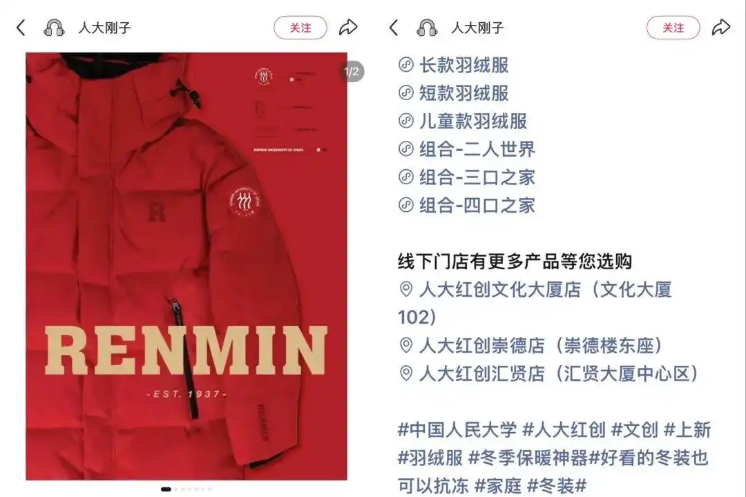Chinese corporate image is changing

Companies are no longer just 'companies' but are transforming into increasingly competitive brands
This year's Fortune Global 500, arguably the most respected ranking of the world's largest corporate brands, should provide no surprises for those monitoring the rise and rise of Chinese brands.
But even those familiar with the growing pace of internationalization across all industrial sectors of Chinese brands may remain unaware of the emotional brand building now transcending all areas of the nation's business culture.
To put it succinctly, these Chinese companies are no longer just "companies" but are transforming into increasingly competitive corporate brands.
Over the past few years, my research has taken me inside many Chinese corporate brands where a brand-building culture, rather than cost-control culture, is manifest.
Not only are there no fewer than three Chinese corporate brands in the top 10 of this year's Fortune Global 500, the total number in the top 500 has reached an incredible 110.
In addition to the energy and banking sectors' continued rise, with State Grid, China National Petroleum and Sinopec as well as China Construction Bank and Agricultural Bank of China occupying top positions in the 500 listing, it is perhaps most exciting to witness the presence of a wider variety of Chinese brands.
For example, electrical appliance producer Midea sits proudly in the Fortune Global 500 for the first time, one of 12 Chinese debutants.
Brand Midea is indicative of the transition from low-cost producer to premium brand building across more Chinese consumer brands. Not only has the company addressed major quality, service and reliability issues, but it has also adopted an emotional brand building philosophy where emotional associations now play a key part in its domestic, and increasingly international, corporate branding strategy.
E-commerce giant JD.com, another debutant, is also representative of change across Chinese companies, particularly the entertainment and leisure sector. The company has also transcended the purely functional product and service offering with layers of emotional brand association, which positions the brand as far more than simply e-commerce. Fun and excitement now play an equally important part in JD.com's brand image as competent and reliable.
This move from competent functionality to additional layers of emotional meaning is perhaps characterized most by Lenovo, another Fortune Global 500 brand. The world's largest PC producer has successfully moved up the value chain and almost reinvented itself. In addition to a reputation based on technological excellence and superb service, the Chinese company has added sophistication and even status to its brand image.
Chinese car brands are also on this road from reliably functional products to emotional brands, and another of this year's Fortune Global 500 brands, Dongfeng Motor Group, shines as a prime example.
Dongfeng's portfolio of brands no longer even resembles the traditional appearance of older Chinese car brands. Modern, sleek, stylish and sophisticated are all part of Dongfeng's brand image, and one has only to glimpse its range of recent brands to appreciate this relatively recent brand-oriented approach.
Emotional brand building is an essential part of any sustainable competitive advantage, and all of the Chinese corporate brands in this year's Fortune Global 500 are now taking this approach. But perhaps most significant is the now widespread acceptance across the entire Chinese business sector that considerable and sustained investment in the latest technology as well as in human resources is a prerequisite to domestic and international market penetration.
Gone are the days of shortsighted, sales-oriented business strategies at Chinese corporate brands, with much of this change due to the increasing influence of a slightly younger and far more modern Chinese brand manager. Those born after 1980, the so-called balinghou, more readily accept a brand-building business philosophy, while according to my research, those born after 1990, the jiulinghou, are eager to build on this approach, bursting with innovation and creativity.
A less risk-averse, far less ethnocentric, and internationally engaging mindset is also fast becoming the norm of this modern Chinese brand manager. Hence, the increasingly audacious nature of Chinese company takeovers of famous foreign brands. There is no longer any sign of the bunker mentality at Chinese companies that had hampered domestic and international expansion in the past.
The Fortune Global 500 will become littered with Chinese corporate brand success stories in the years to come, as the balinghou and jiulinghou climb the Chinese corporate ladder. But the international business community should not fear this inexorable rise. Instead, the international arrival of Chinese corporate brands should be seen as a welcome opportunity to cooperate and collaborate and gain further understanding of the changing Chinese consumer culture.
The author is a visiting professor at the University of International Business and Economics in Beijing and a senior lecturer at Southampton University. The views do not necessarily reflect those of China Daily.
(China Daily Africa Weekly 08/19/2016 page8)
Today's Top News
- Xi hears report from Macao SAR chief executive
- Xi hears report from HKSAR chief executive
- UN envoy calls on Japan to retract Taiwan comments
- Innovation to give edge in frontier sectors
- Sanctions on Japan's former senior official announced
- Xi stresses importance of raising minors' moral standards





























